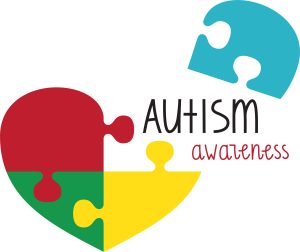We are delighted to share that Jemini Patel, a recent delegate on our National Award for SEN Coordination course, has won the Teacher of the Year Award at Nasen’s sixth annual awards ceremony.
Prior to completing the course, Jemini worked as a teacher at the Whitefriars School in Harrow. She decided to study our NASENCO course as she felt she needed to develop her knowledge to support the children in her class with SEN. She believed the children needed more support and wanted to be able to improve this.
Jemini is now working a SENCO and Assistant Head Teacher at an all-through school for children aged 4 – 19 years old.
The progress in her phase is outstanding and she feels this was largely due to the SEN interventions she learnt about on the course. One of the projects Jemini tackled as part of the NASENCO course was to implement interventions in her class. These were so successful, they have now become a whole-school practice and Jemini believes this is a direct result of what she learnt from the course.
Jemini added that the flexibility of the course really appealed to her and Anne, her course tutor, was very attentive throughout.
On 14 October 2022, Jemini attended the glittering celebration at the Grand Hotel in Birmingham, where she received her award.
Speaking of her win, Jemini said: “It is a great honour to receive this award. I have an amazing team at Whitefriars who have supported me to make a difference, which I am thankful for. This award has inspired and motivated me to continue and develop our inclusive practice even further.”
Whitefriars School Headteacher, Jonathan Watson, added, “Jemini’s work is phenomenal. Jemini works tirelessly with dedication, commitment, and expertise to ensure pupils with special educational needs and disabilities at our school receive a fully inclusive education. Jemini’s unwavering belief in the potential of all, combined with her drive to continually improve provision, has resulted in high quality pupil support. Our school and our pupils are lucky to have Jemini, and Jemini is a very worthy winner of this award. We are very proud of you”.
We wish to congratulate Jemini on her fantastic achievements and look forward to seeing the further development of both herself and her students.
Earlier this month we had a great couple of days witnessing our dedicated delegates receive their PGCerts and MEds at Middlesex University.
To see their months and years of hard work come to fruition on their day of graduation means a great deal to all of us at Real Training. We celebrated with a number of our delegates from 2022, as well as a second day on which we met our 2021 and 2020 graduates!
Delegates visited us before their ceremony for a chat with the academics who led their courses. They also had the chance to meet other delegates, enjoy a glass of bubbly, and have a photo with our very own photographer. This is an amazing opportunity to come together and celebrate graduating, especially for the delegates who opt to study with us completely online. We plan to host a similar event next year for our graduates in 2023, so current delegates, please – keep an eye out for an invitation, as we are always delighted to help celebrate your achievements..
“My graduation for the NASENCo post graduate degree was a wonderful experience from start to finish. The campus, which I was a stranger to, was welcoming and each and every one of the staff made me feel special. The Real Training team welcomed my family and I warmly for a drinks reception and it was lovely to get to know some of the other delegates. It was a truly wonderful day, which I will cherish forever.” -Emma Heasman, Postgraduate Certificate in SEND: National Award for SEN Coordination
Congratulations to all of our hard-working graduates, it’s been a pleasure!
Aaron Pape – CPT3A
Aaron currently teaches Sociology at a Sixth Form College in Bexhill-On-Sea. Aaron completed the Certificate in Psychometric Testing, Assessment and Access Arrangement (CPT3A), which he was enrolled onto by his workplace. Aaron was happy to study with Real Training as his colleagues stated to him that it provided all the necessary elements to obtains the qualification needed.
What was your experience of learning with Real Training?
Real Training provided very good provision of guidance in how to navigate around the website and how to access the resources available to the delegates. The tutoring was also of a good standard, guiding myself on where to improve certain aspects of my work but also allowing myself to steer the ship of my own learning. Some of the tasks required were of a challenging nature, which was very good for academic and professional practice. The course met my expectations and I would recommend it to those wishing to pursue a career within the realms of SEN or access arrangements.
How has the course helped make an impact at school?
Particularly with the AAC, it has allowed me to complete a Form 8 to the appropriate JCQ standards, which has helped the college with completing access arrangements.
How has the course helped develop you as an educational professional and what do you hope to achieve with the new knowledge/skills in the future?
I am now aware of the immense testing and research that is undertaken to compile these psychometric tests. It has helped me in further my educational development early on in my career. I hope to further my knowledge in the subject area and help those members of staff who may have questions about exam concessions and JCQ regulations.
Lastly, what are the top 3 things you are looking to do within your setting, since completing the course?
1. Educating staff members of the requirements of exam concessions.
2. How to implement and write effective normal ways of working testimonials.
3. As a teacher myself, being more vigilant in students who may be entitled to exam concessions.
Susana Cortez – NASENCO
Susana Cortez is a SEND Specialist lecturer, she has worked with non-verbal students and has a special interest in autism, she is also very keen to develop her skills as a SENCO. Susana currently works in the Inclusive Leadership Department at West London College.
She completed the National Award for SEN Coordination course with us in 2021.
What made you choose the Real Training course over other options?
I was recommended through Google, it was a great option because it was online. I could work it around my own routine and complete the course on my own time.
What was your experience of learning with Real Training?
The course was fantastic and extremely informative. My tutor was amazing and always supported me with constructive feedback. The course helped me understand areas I wasn’t so comfortable with, such as funding and leadership. The online library is spectacular, and the resources are very appropriate. Everything is well organised between each strand. The course met my expectations, and I would definitely enrol on another course.
How has the course helped make an impact at school?
This course gave me the support to reflect on our LSA support and identify improvements by creating action plans and new CPD using LSAs’ views and perspectives. Our CPD week is now also based on LSAs’ views, covering a range of different topics to make staff more confident.
How has the course helped develop you as an educational professional and what do you hope to achieve with the new knowledge/skills in the future?
This course helped me develop my leadership skills, which will help me advance in my career and seek jobs in management and SEND coordination. It gave me better skills, particularly when working with teaching assistants, and I now feel more confident in this area, understanding the significant impact of working well with all staff around our students.
Lastly, what are the top 3 things you are looking to do within your setting, since completing the course?
- CPD – Levels of support – LSAs
- Visual impairment resources and strategies
- Teachers CPD – How to make an effective use of our LSAs
According to the National Autistic Society, autistic children are three times more likely to be excluded from mainstream school, and more than 80% have experienced mental health issues within the education system in the UK.
Many have been dealing with even more challenging conditions over the last couple of years, including rapidly changing routines and circumstances that can be incredibly disruptive, disorientating and traumatic for those affected by autism.
To raise awareness around autism, one important characteristic felt for many individuals on the spectrum is the need for social camouflage: masking. A big challenge faced by someone with autism is fitting their lives into a neurotypical world, which is why you will see puzzle and jigsaw symbolism, encapsulating this human experience.

What is masking?
‘Autistic masking, camouflaging, or compensating is a conscious or unconscious suppression of natural autistic responses. It is hiding or controlling behaviours associated with autism spectrum disorder (ASD) that may be viewed as inappropriate in situations.’
[Autism Awareness Centre Inc.]
What are the signs?
- forcing or faking eye contact during conversations
- imitating smiles and other facial expressions
- mimicking gestures
- hiding personal interests
- developing a repertoire of rehearsed responses to questions
- scripting conversations
- pushing through intense sensory discomfort including loud noises
- disguising stimming behaviours
Raising awareness around masking is a great step towards building a safer community for people with autism spectrum disorder. It must be a group effort to break down a societal standard to ‘fit in’. To best describe the experience, a poem written by Virginia Betts articulates masking in a beautiful manner. This poem was recently published in The Spectrum Magazine, produced by and for Autistic people.
Autism Spectrum Conditions – Real Training
Having a theoretical and practical understanding of aspects of autism, like masking, makes a positive difference to young people with autism spectrum conditions. Fortunately, these topics and more are covered in our module; Autism Spectrum Conditions. It enables educators to bridge the gap and make a real difference to children and young people with autism.
The practice-led learning approach will arm you with the ability to give each autistic child in your care the best possible outcome through practice-led learning. Additionally, you will develop the relevant skills and knowledge to close the autism support and teaching gaps in your setting, and gain a critical understanding of the relevant theories, research and policies, and the ability to assess knowledge and existing practice.
If you have any further questions or queries about any of these courses or qualifications, please don’t hesitate to get in touch on +44 (0)1273 35 80 80 or info@realgroup.co.uk and we will be happy to help.
Catherine Burton – CPT3A, AAC
Catherine Burton has worked in education for over twenty years. She currently works in a Catholic Secondary School in West Yorkshire. Catherine has a keen interest in SEND, especially in Autism and Dyslexia.
Catherine studied the Certificate in Psychometric Testing, Assessment, and Access Arrangements with us.
What made you choose the Real Training courses over other options?
After doing extensive Google research, I chose Real Training. I was impressed with how clear and easy to navigate their website was. There was lots of background information about the group and clear information for each training course they had to offer.
What was your experience of learning with Real Training?
I thoroughly enjoyed my time with Real Training. My course tutors were incredibly helpful and patient. Even though they worked part-time, I always received replies to any queries on the same day I sent them. Talk about going above and beyond! It had been a while since I had done any training, but at no point did I ever feel unsupported. The customer care team were also excellent. I had a technical issue, which was entirely my fault, and it was dealt with quickly and efficiently.
How has the course helped make an impact at school?
The SEN department had gone through a complete staff change prior to my starting my role, as the previous two qualified assessors had retired. The school had to ‘buy in’ an assessor for the class of 2022 students because their Access Arrangement Applications had not been processed. My qualification has had a significant impact on the school. The knowledge I have gained has allowed me to audit the current documentation, resulting in four students now having Access Arrangements in place. We have also had several parents challenging the school about what support their child should get. The knowledge I have obtained has allowed me to advise the SENCO on what is and isn’t allowed. We now have two other staff members undertaking the course.
How has the course helped develop you as an educational professional and what do you hope to achieve with your new knowledge/skills in the future?
Having worked in education for over twenty years, I thought I had a fairly good understanding of the evidence needed for Access Arrangements and how applications are made. The course allowed me to increase my prior knowledge and ‘fill in’ the blanks, giving me a comprehensive understanding of the process from beginning to end.
Katie Lohan – CPT3A
Katie Lohan has been working in SEND for ten years and is currently based at an international School in Oman. Since joining her current school as a SENDCO working for students in early primary phase, she has done lots of work in literacy difficulties, speech and language, speech delay and engaging the children in picture communication.
She spends a lot of time working with parents of children experiencing SEND, helping them navigate the systems and empowering them with knowledge which is not readily available in the Middle East.
Katie studied the Certificate in Psychometric Testing, Assessment and Access Arrangements with us.
What made you choose the Real Training course(s) over other options?
When researching a course to undertake to gain qualifications for assessing, Real Training came highly recommended from many sources. As I am in Oman, a face-to-face course would not have been an option for me.
The flexible nature of the Real Training course was a huge advantage for me as a lot of courses available have live classes at times that don’t line up with our time differences. The option to complete at my own pace was a huge positive also due to a busy workload and online school delaying some of the sections for me. It was easily accessible at all times.
What was your experience of learning with Real Training?
From the very start, Real Training were great to deal with. I received my training manual in very quick time by the courier and was able to get started right away. The material in the manual was very well laid out and using it along with the online resources was great. The videos in particular I found very useful. The sample submissions and other downloadable documents were of great help also. The personal aspect to the course in terms of tutor feedback was excellent and one of the highlights for me. The feedback given was always constructive and supportive and well placed to guide and support. The forums where you could communicate with other participants was good also. It was comforting to read other’s thoughts and questions as often they were similar to mine. Campus Online was a very user-friendly platform and was always functional with no technical issues. This was reassuring when studying fully online. It was easy to navigate and well laid out section by section.
Across the board, the Real Training team must be commended for their commitment to its participants and the quality of courses.
How has the course helped make an impact at school?
Since completing the course I have successfully undertaken a schedule of different assessments to include the YARC, CTOPP2 and DASH. This was only possible through the experience gained in the CCET course. I have also put through a number of online applications for Access Arrangements for our GCSE students. The AAC section of the CPT3A was excellent in guiding me through the process.
How has the course helped develop you as an educational professional and what do you hope to achieve with the new knowledge/skills in the future?
As the only trained assessor in my school, it has been a great opportunity for me to develop in many skills particularly in assessing students of all ages. It has given me a lot more confidence in my assessing across the school. I hope to develop a coherent system of record keeping and assessment pathways for the school. Due to the school having no SENDCo up to now, this is something I will endeavour to achieve with the new qualifications to support me.
Ceri Matty – NASENCO
Ceri Matty has always had an interest in SEND, since she started her teaching career 18 years ago. It became more profound when her son was born in 2008 and as he started his school journey, his SEND needs became clear. He has had an EHCP since Year 2 (now in Year 9) and a diagnosis of ASD.
His journey, as well as Ceri’s own teaching, led her progressively into more depth in the study of SEND. This enabled her to better meet her students’ needs in class as well as ensure her son gets the very best support from his school.
Ceri studied the National Award for SEN Coordination with us.
What made you choose the Real Training course over other options?
As a full-time middle leader (not the named SENCO) and a parent of two, Real Training was the obvious choice for me. The delivery solely online meant that I could work flexibly around my work/life, whilst still achieving the same accreditation as a course that had face-to-face delivery. It came highly recommended on SEND teaching support groups I follow. The use of the online network, whereby you can share your thoughts, ask questions and offer support was fantastic and I actively encourage anyone using Real Training to utilise it.
What was your experience of learning with Real Training?
When I initially started, the course felt overwhelming. However, after reading advice from other delegates I quickly found that the organisation of the course and units were incredibly well structured. This was because the structure allowed me to work at my own pace and equally provided lots of links to online resources, articles and relevant legislation etc.
My tutor was fantastic, available for email or telephone support when required, and checked in when I had not logged in for a couple of weeks to see if I needed support. The course, once you get through the initial introduction unit, is incredibly easy to navigate. Tasks are progressive and provide a great mix of theory and practical opportunity. Strand 2 and 3, take time as you have to plan, implement and review projects within your setting, so I actively encourage delegates to look at these relatively early to plan into your year of study. As I work full time, I found it easiest to keep the actual assignment write-ups to the school holidays and use my face-to-face time to enhance my practical skills within the workplace.
How has the course helped make an impact at school?
Without hesitation, the support from the leadership team has been essential in the impact and outcomes. However, the knowledge that you develop enables you to motivate and enrich the learning of all staff within the school setting, which in turn enables them to support pupils with SEND. This ensures quality first teaching is at the forefront. SEND provision has and will continue to change based on the needs of those students in your setting – the course has made me realise that SEND is on an ongoing journey and I feel equipped with the tools and knowledge to ensure that the impact is not short term, rather sustained.
How has the course helped develop you as an educational professional and what do you hope to achieve with the new knowledge/skills in the future?
It has helped me develop a much higher depth of knowledge and understanding of SEND and will allow me to continue to develop within the school setting and beyond, ensuring that we continue to meet the needs of all our SEND students.
Anne Louise Davies – NASENCO
Anne is currently the Assistant Headteacher and SENCO at a mainstream 11-18 secondary school in Westbury, Wiltshire. When asked if she has any special interests in SEND, Anne explained “Dyslexia has become my most recent interest as I am interested in understanding more about phonological awareness and verbal memory.”
Anne completed the National Award for SEN Coordination with us at Real Training.
What made you choose Real Training over other options?
A colleague of mine had previously undertaken the NASENCO qualification through Real Training and recommended it. It also appealed to me as it was online learning and the assignment completion dates were not pre-set, offering me a huge amount of flexibility.
What was your experience of learning with Real Training?
My experience with Real Training has been extremely positive, and I have strangely really enjoyed the course and all the reading involved. It has been a long time since I have written an assignment, but I found the whole process easier than I had imagined due to the excellent structure and support from my amazing tutor, Clare. When you first start the course, it appears daunting, but the ‘tick box’ approach to completing the different elements is very satisfying, and the tracking tool that shows you how far through the course you are is also very motivational.
Consequently, I have now signed up for the Certificate of Competence in Educational Testing (CCET) course. Even though the course is all online and I have not met my tutor, I feel that the level of interaction has resulted in a relationship being established. Her feedback was not only extremely helpful but was also provided promptly, enabling me to make the necessary alterations while my research was still fresh in my memory.
How has the course helped make an impact at school?
The course has resulted in a complete reworking of our SEND provision. This started with a visit to my placement school, where I discovered how they developed their TAs and the types of intervention they offered. I was also able to improve publications on our website, including the SEND Information Report, so that they met the requirements of the Code of Practice. Reflecting on my leadership approach has allowed me to develop a style that has empowered the Teaching Assistants and given them a greater sense of responsibility. Basically, everything that is now in place is down to this course.
How has the course helped develop you as an educational professional and what do you hope to achieve with the new knowledge/skills in the future?
The course has added substantially to the amount of educational research I have undertaken and has offered views and opinions that I would not previously have considered. The new knowledge has been applied to my setting to improve the quality of our SEND provision. It is also a reminder of the importance of keeping my SEN knowledge up to date through academic research.









